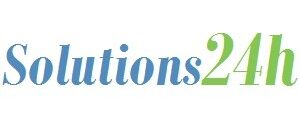How Hand print Scanners Work
How Hand print Scanners Work:- The hand geometry scanner looks for unique features in the structure of the hand. These unique features include the finger thickness, length, and width, the distances between finger joints, the hand’s overall bone structure etc. It should be noted here that with iris and fingerprint recognition, the primary goal is to look for extremely distinctive features. However, this is not the case with hand geometry recognition, as it is looking for moderately unique features. Thus, hand geometry recognition would not be the biometric tool of choice for high security applications or identification purposes where iris recognition or fingerprint recognition would be, respectively.
The user first places his or her hand onto a platen. This platen consists of 5 pegs which help the user position their fingers properly in order to insure quality enrollment and verification templates. The hand geometry scanner consists of a charged couple device camera (CCD), as well as various reflectors and mirrors in order to capture various black and white pictures of the hand. Two basic types of pictures of the hand are captured: (1) An image of the top of the hand and (2) An image of the side of the hand.
In the enrollment phase, the user is prompted by the hand geometry scanner to place their hand on the platen three different times, so that three images can be captured and then averaged. The resulting image forms the basis for the enrollment template, which is then stored in the database of the hand geometry scanner. The enrollment phase can be accomplished in just five seconds.
In the verification phase, the user is prompted to place their hand only once on the platen. An image is captured and forms the basis for the verification template. The verification template is compared against the enrollment template in the exact same fashion as fingerprint recognition. The verification phase can be accomplished in just under one second.
In the enrollment and verification phases, the hand geometry scanner takes 96 measurements of the hand. The enrollment and verification templates are only 9 bytes.

